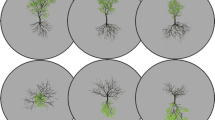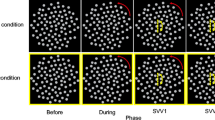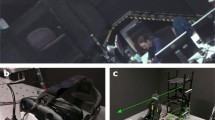Abstract
The existence of body orientation mental imagery was tested by examining whether self roll tilt imagery affects the subjective visual vertical (SVV). Twenty healthy subjects judged the orientation of a dim luminous bar with respect to gravitational vertical, while normally seated in complete darkness with their head firmly restrained earth vertically. SVV was measured in three conditions: a reference condition with no imagery, and a left and a right imagery condition, during which the bar orientation was to be judged while the subjects imagine themselves roll-tilted towards left or right, respectively. The imagined roll tilts were of the same magnitude as roll tilts which generally induce an E- effect, i.e., an SVV lean toward the side opposite to those of body tilt. If imagery and perception of self roll tilt share common processes, self roll tilt imagery should induce an E-like effect. Results show an imagery- induced E-like effect, which strongly supports the idea that humans can perform mental imagery of body orientation about gravity.
Similar content being viewed by others
Author information
Authors and Affiliations
Additional information
Received: 4 April 2000 / Accepted: 1 September 2000
Rights and permissions
About this article
Cite this article
Mertz, S., Lepecq, JC. Imagined body orientation and perception of the visual vertical. Psychological Research Psychologische Forschung 65, 64–70 (2001). https://doi.org/10.1007/s004260000048
Issue Date:
DOI: https://doi.org/10.1007/s004260000048




